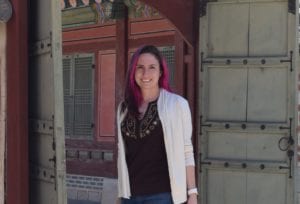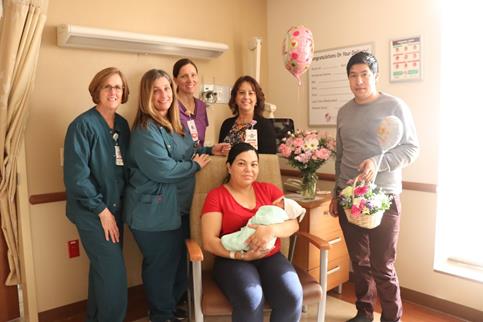By Barbara Beltrami
Lasagna is the answer to a cook’s and diner’s prayer — a favorite one-dish balanced meal that’s always a palate pleaser. And with the availability of no-boil lasagna, which I think produces a lighter, more delicate pasta than the old-fashioned kind that is so difficult to handle, it’s really just a matter of precooking some of the fillings and assembling them in alternate layers with the pasta. Here are two versions.
Traditional Lasagna
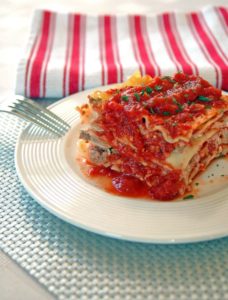
YIELD: Makes 6 to 8 servings
INGREDIENTS:
¼ cup olive oil
1 large onion, diced
½ pound crumbled Italian hot or sweet sausage meat
½ pound lean ground beef
½ cup dry white wine
2 garlic cloves, minced
One 28-ounce can tomato puree
One 14-ounce can crushed tomatoes
2 tablespoons chopped fresh basil or 2 teaspoons dried
1 tablespoon chopped fresh oregano or 1 teaspoon dried
Large pinch sugar
Pinch baking soda
Salt and freshly ground black pepper to taste
1 pound ricotta cheese
1¼ cups freshly grated Parmesan cheese
2 cups shredded mozzarella cheese
1 large egg
½ cup chopped fresh Italian flat-leaf parsley
Salt and freshly ground black pepper to taste
Nonstick cooking spray
1 pound no-boil lasagna sheets
DIRECTIONS:
Preheat oven to 375 F. In a large saucepan, heat olive oil over medium heat. Add the onion, sausage meat and ground beef and cook, stirring frequently, until onion is golden and meat is brown. Add the wine; stir; then add the garlic, tomato puree, crushed tomatoes, basil, oregano, sugar, baking soda, salt and pepper. Cook over medium-low heat 5 minutes.
Meanwhile, in a large bowl, combine ricotta, Parmesan and mozzarella cheeses, egg, parsley, salt and pepper. Coat a 9×13-inch baking dish with nonstick cooking spray. Spread a thin layer of sauce on bottom. Next, place lasagna sheets over the sauce. Place six dollops of ricotta mixture on top of sheets and, with a large spoon or rubber spatula, spread evenly; top with sauce.
Repeat procedure until lasagna sheets, ricotta mixture and sauce are used up, ending with lasagna sheets, then sauce on top. Cover with aluminum foil and bake 30 minutes, until sauce is bubbling at sides. Remove the foil and bake another 10 to 15 minutes. Let rest 10 minutes. Serve hot or warm with a tossed salad and a light red wine.
Roasted Veggie Lasagna
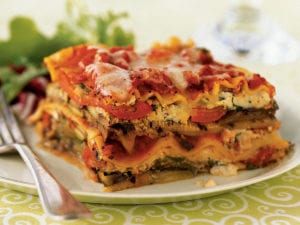
YIELD: Makes 8 servings
INGREDIENTS:
1 medium eggplant, cut into half-inch slices
2 medium green or yellow zucchini, cut into half-inch slices
8 ounces sliced mushrooms
1/3 cup extra virgin olive oil
Salt and freshly ground black pepper, to taste
Nonstick cooking spray
One and a half 14-ounce cans diced tomatoes
1 garlic clove, minced
2 tablespoons fresh basil or 2 teaspoons dried
1 tablespoons fresh oregano or 1 teaspoon dried
3 tablespoons extra virgin olive oil
Salt and freshly ground black pepper, to taste
6 ounces goat cheese
1 cup freshly grated Parmesan cheese
1 pound no-boil lasagna sheets
DIRECTIONS:
Preheat oven to 425 F. Brush vegetables with olive oil and season with salt and pepper. Coat two to three baking sheets with nonstick cooking spray and place veggie slices on them; roast 15 to 20 minutes, until tender. Remove from oven and reduce heat to 400 F.
Meanwhile in large skillet or saucepan combine tomatoes, garlic, herbs and the three tablespoons olive oil. Cook over medium heat for five minutes. Combine goat and Parmesan cheeses.
Spread a little sauce in a 13×9-inch nonreactive baking dish; add lasagna to cover, the eggplants slices, overlapping if necessary, then 1/3 of the cheese mixture and finally enough tomato sauce to lightly cover. Repeat procedure using zucchini for second layer and mushrooms for third layer, ending with lasagna topped with tomato sauce.
Cover with aluminum foil, bake 30 minutes, uncover and bake another 10 minutes. Remove from oven and let rest 10 minutes. Serve hot or warm with a spinach salad and dry white wine.

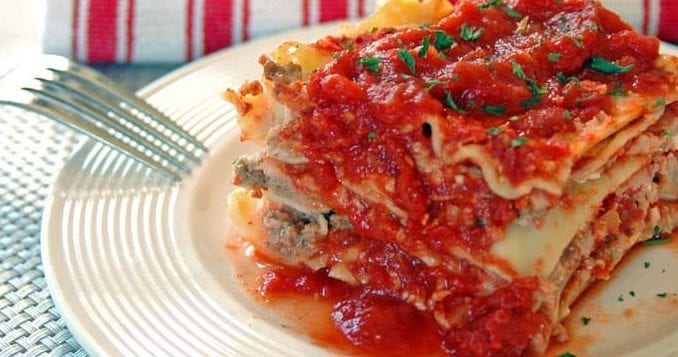





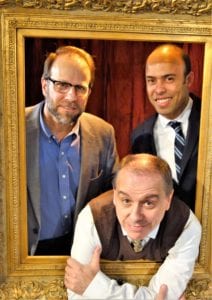




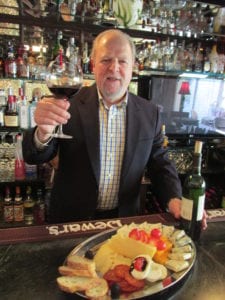


 Jason Sheltzer, a fellow at Cold Spring Harbor Laboratory, and his partner Joan Smith, a senior software engineer at Google, have sought to use the genetic fingerprints of cancer to determine the likely course of the disease.
Jason Sheltzer, a fellow at Cold Spring Harbor Laboratory, and his partner Joan Smith, a senior software engineer at Google, have sought to use the genetic fingerprints of cancer to determine the likely course of the disease.